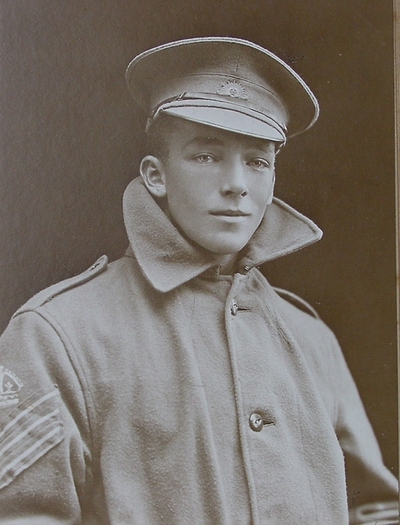AAHC Recap (Afternoon)
The first session of the afternoon at the AAHC conference was by Patrick Murray-John as he discussed “Interlinking Who, What, Where, When, Why, and How We Teach into a Giant EduGraph.” He gave an entertaining presentation that described the benefits and challenges of a semantic web within education. One story stood out in particular as an example for the need for better efforts in the field. Two courses might use Frankenstein as an assigned text: a class in the chemistry department that examined the portrayal of scientists in literature and an introductory English literature course. Unfortunately, the only people who know that both classes are using the same text is the school book store. If the course syllabi were located within a strong semantic web, there could be tremendous potential for interdisciplinary discovery and interaction within a university.

The second session of the afternoon was “Mapping Our Archives,” by Tim Sherratt of the National Archives of Australia. Sherratt gave an incredible presentation, as he demonstrated his work with the records of Australian servicemembers during the First World War in Mapping Our Anzacas. First up, he used Google Earth to show how he mapped where each of the 300,000 plus soldiers were from. It was remarkably powerful, as he used the platform dynamically in order to visualize the origins and density of this segment of the population. In particular, I was struck at how effectively it took advantage of the interface of Google Earth, and its re-population of point data when you zoom in, so even as you get more and more detailed, it seems like the dots just keep multiplying. The map was one point of entry for users of the database, with another critical point of entry being the opportunity for users to upload multimedia to a “scrapbook” of individual servicemembers profiles. Although some curators expressed (standard) anxiety about losing credibility and content control, they were overwhelmed at the number and quality of contributions from “laypeople,” such as this one of Donald Addison:

Tim also shared his crafting and tweaking of the database for the servicemembers’ records. Each record was scanned, and many of them included photographic sets of the individuals along with vitals and descriptions of their service. He then used CoolIris (which I discussed in one of my first blog posts) to create a virtual gallery of these archival documents, as you could move along a 3-D wall with rather haunting profile photographs and corresponding information (almost like an early 20th-century version of Facebook). He also showed a similar application of CoolIris for other archival records, including those of immigrants and laborers. I’ve always been somewhat skeptical of CoolIris as a visualization technique, always thinking it did little more than create a kind of cool way to zoom around and look at pictures. But Tim substantially changed my mind by demonstrating its power as an interface - without a doubt, being able to see an array of documents displayed in front of you, seeing the faces of Chinese immigrant children looking out at you, was a singularly powerful use of archival material that significantly enhanced the viewer’s interaction with them.
Tim’s presentation got rave reviews from its audience members, and I think I speak for all of them when I say that his use of dynamic technical interfaces (which included not only Google Earth and CoolIris, but also Tumblr and Greasemonkey scripts) was one of the most elegant, powerful, and accessible examples of bringing archival material to life that I’ve seen yet. Tim offered a fantastic glimpse into what is possible when you combine the power of digital applications with the subtlety and thoughtfulness of historical exploration.
The final session of the afternoon was a presentation from Susan Garfinkel, Judy Graves, and Jurretta Heckscher from the Library of Congress. Although I was a little fried from seven hours of absorbing and processing a host of new thoughts and ideas, I always love supporting our friends at the LOC, who have put a lot of time, thought, and effort into advancing and experimenting with digital history. Their presentations brought up several interesting points. First, they stressed that a series of surveys have shown that faculty members are less than enthusiastic about actually utilizing digitization tools and resources that their libraries provide. Additionally, the LOC has decided to expand their earlier initiative to post photographic content on Flickr Commons by posting audio and video content to iTunes and YouTube. The presentation reinforced my optimism that our national library has the courage to pursue such a variety of digital initiatives.
I drove out of George Mason’s campus feeling exhausted and inspired. The conference did a superb job of bringing together and enhancing a community of digital humanists (made even stronger by the constant Twittering activity during the day). This community isn’t necessarily representative of either the general public or even the wider historical community - in particular, I was struck at the rather overwhelming whiteness of the conference participants. I think more efforts could be made to encourage a wider diversity of perspectives and backgrounds within the field of digital history (a subject for another blog post). Nevertheless, the range, depth, and passion with which so many people are pursuing their projects gives me a strong sense of hope. I know that over the next several years I will undoubtedly struggle to balance the demands of training in a traditional graduate history program with my own passion for digital methodology and exporation. But events such as the AAHC conference bolster my faith in the incredible support system of fellow digital humanists that I can lean on as I walk down that path.